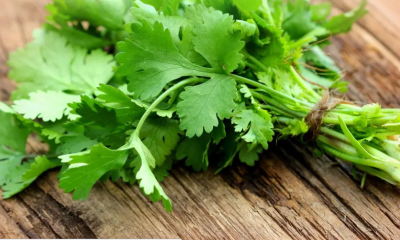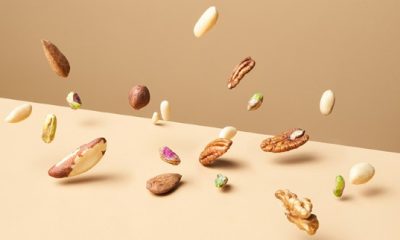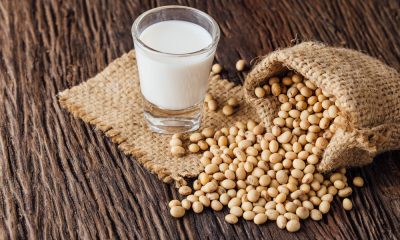Health
9 benefits of maple syrup

Discover the 9 benefits of maple syrup.
Most people already consume a lot of sugar, probably even much more than they need.
With that said, maple syrup is one of the sweeteners you should use in small amounts and a good alternative to cane sugar when used in moderation.
Do you love maple syrup? See all the nutritional benefits in this guide.
Like the contrast between whole and refined grains, natural, unrefined sweeteners like maple syrup contain higher levels of beneficial nutrients, antioxidants, and phytochemicals than white table sugar or high-fructose corn syrup.
This is also why we see the many health benefits of raw honey. When used in appropriate amounts, the nutritional benefits of maple syrup can include the ability to reduce inflammation, supply nutrients, and better manage blood sugar.
Maple tree syrup, or more accurately the sap, has been used for centuries. The sap of various maple trees began to be processed into syrup long before European settlers arrived in the Americas.
Native Americans had theories about maple syrup’s nutritional impact even back then, and the sweetener had cultural significance to many Aboriginal tribes.
They even celebrated the sugar moon (the first full moon of spring) with a maple dance and saw maple sap as a source of energy and nutrition.
What are the benefits of maple syrup
Compared to refined cane (or “table”) sugar, which offers absolutely no nutrients, maple syrup contains some important antioxidants and minerals like zinc and manganese. When we do a side-by-side comparison of sugar nutrition and maple syrup nutrition, we see that they have some things in common, but also some things that make maple syrup more favorable.
Because maple syrup is better than sugar
Both are made from about two-thirds sucrose, but maple syrup provides less sugar overall to your diet and more nutrients. Maple syrup’s glycemic index score is around 54, compared to a score of around 65 for regular cane sugar.
This means that one of the benefits of maple syrup nutrition is that it affects your blood sugar levels a little less drastically than table sugar. Maple syrup also provides some minerals and antioxidants, while sugar lacks both.
Another factor that makes these two sweeteners very different is how they are made. Maple syrup is derived from the sap of maple trees.
Unlike refined cane sugar, which undergoes a long and complex process to be condensed into crystallized sugar, maple syrup is a relatively more natural and unrefined product.
And as you probably know, high fructose corn syrup is not a natural or healthy choice, and neither are artificial sweeteners (hence the name).
For example, sugar cane stalks and beets are mechanically harvested, cleaned, washed, ground, extracted, squeezed, filtered, purified, vacuumed, and condensed, even before they are converted! in sugar crystals!
Maple Syrup Nutrition Facts
1 tablespoon of maple syrup contains approximately:
•7 milligrams of manganese (33 percent of the recommended daily value, or DV)
•0.8 milligrams of zinc (6 percent DV)
•13.4 milligrams of calcium (1 percent DV)
•8 milligrams of potassium (1 percent DV)
•0.2 milligrams of iron (1 percent DV)
•8 milligrams of magnesium (1 percent DV)
9 Health Benefits of Maple Syrup
1.- Contains numerous antioxidants
According to studies comparing the total antioxidant content of natural sweeteners with refined sugar products such as white sugar or corn syrup, substantial differences in total antioxidant content were found.
Refined sugar, corn syrup, and agave nectar contain the least antioxidant activity, but maple syrup, black and black molasses, brown sugar, and raw honey showed the highest antioxidant capacity (with the highest molasses).
A good reason to use change your sweetener? Maple syrup nutrition is impressive when it comes to supplying protective antioxidants. The medical journal Pharmaceutical Biology revealed that pure maple syrup contains up to 24 different antioxidants.
These antioxidants, in the form of phenolic compounds, are beneficial in reducing free radical damage that can cause inflammation and contribute to the formation of various chronic diseases. Whenever possible, select darker grade B maple syrups, as these contain more beneficial antioxidants than lighter syrups.
Some of the major antioxidants found in maple syrup include benzoic acid, gallic acid, cinnamic acid, and various flavonoids such as catechin, epicatechin, rutin, and quercetin.
While most are found in low concentrations, others are present in higher amounts, so the benefits of these antioxidants may offset some of the downsides of consuming the high amount of sugar in the syrup.
2.- Reduces the glycemic index
The liver refines the rapid metabolism of refined sugar and refined carbohydrates in general, causing a “sugar high” followed by a “sugar crash.” Even worse, consuming too much sugar rapidly raises blood sugar and increases insulin levels, which over time can lead to lower insulin response and problems with blood glucose control, and is the reason it develops diabetes.
However, keep in mind that consuming too much sugar, from any source, is a major cause of some of the most widespread health problems, such as obesity, type 2 diabetes, and heart disease, even natural sweeteners should be used like maple syrup in small amounts.
When it comes to solutions to naturally reverse diabetes or other blood sugar-related conditions, it’s best to minimize your overall sugar intake and especially avoid refined sugar.
3.- Fights inflammatory diseases
Because maple syrup nutrition supplies polyphenolic antioxidants that reduce inflammation, it can be considered part of a healthy diet that helps prevent certain conditions such as arthritis, inflammatory bowel disease, or heart disease.
The plant-based compounds in maple syrup reduce oxidative stress, which is responsible for aging us at a faster rate and reducing the strength of our immune systems.
4.- It can help protect against cancer
While some evidence shows that, to some degree, sugar can cause or at least contribute to cancer, maple syrup appears to be a much less harmful sweetener.
This is due to the presence of antioxidants in maple syrup that can protect cells from DNA damage and mutation.
While maple syrup alone won’t reduce your risk of developing cancer, it’s a much safer option than including high levels of refined sugar or artificial sweeteners in your diet.
5.- Helps protect skin health
Many people swear by using maple syrup topically, directly on their skin.
Similar to raw honey, maple syrup can help reduce inflammation, redness, blemishes, and dry skin.
Combined with raw milk or yogurt, rolled oats, and raw honey, this natural blend is applied to the skin as a mask that can moisturize the skin while reducing bacteria and signs of irritation.
6.- Alternative to sugar to improve digestion
Consuming high levels of refined sugar can contribute to candidiasis, irritable bowel syndrome, leaky gut syndrome, and other disorders of the digestive system.
One of the most important steps you can take to heal leaky gut and autoimmune disorders is to reduce your consumption of refined sugar and opt for small amounts of natural sweeteners instead.
Most artificial sweeteners also cause symptoms of indigestion, such as gas, bloating, cramps, and constipation.
To keep your digestive tract in a healthier shape, free from chemicals and the damage caused by a high-sugar diet, maple syrup can be a much better alternative to use in baked goods, yogurt, oatmeal, or smoothies.
7.- Supplies important vitamins and minerals
Maple syrup contains zinc and manganese in fairly high amounts, as well as potassium and calcium.
Zinc can help fight disease and improve immunity by maintaining white blood cell levels, while manganese plays a crucial role in fat and carbohydrate metabolism, calcium absorption, blood sugar regulation, brain function, and the nervous.
8.- A healthier alternative to artificial sweeteners
If you regularly use artificial sweeteners or refined sugar products like Splenda, sucralose, agave, aspartame, or dangerous sugar, you should consider switching to maple syrup and raw honey as soon as possible.
Artificial sweeteners, while they may be calorie-free, are linked to numerous health problems including weight gain, fatigue, anxiety, depression, learning disabilities, short-term memory loss, and more.
Many existing diseases can be made worse by repeated use of artificial sweeteners, and they also show unfavorable results when it comes to weight loss.
It is quite possible to become addicted to the artificial sweeteners used in many diets or light meals, as they affect food cravings and your ability to control your body’s signs of hunger and fullness.
Maple syrup isn’t linked to any of these health issues, plus it’s more satisfying due to its naturally sweet taste.
9.- It can improve the antibiotic effects
Antibiotics may seem like a quick and easy fix for several different illnesses, but as new research comes out, it’s getting harder to ignore the dangers and downfalls of antibiotic use.
While they target bad bacteria, antibiotics can also attack healthy cells, while overuse of antibiotics results in the creation of “superbugs” that no longer respond to antibiotic treatment.
When researcher Nathalie Tufenkji and her team investigated maple syrup extracts in conjunction with the antibiotics ciprofloxacin and carbenicillin, they observed the same antimicrobial effect with more than 90 percent fewer antibiotics.
In other words, the maple syrup extract helped the antibiotics work better. How? The researchers discovered that the extract increases the permeability of bacteria, helping antibiotics inside bacterial cells.
“There are other products that increase antibiotic resistance, but this may be the only one that comes from nature,” says Tufenkji. More research and testing for allergic reactions are still needed before this can become part of a medical protocol, but Tufenkji’s research suggests hope against antibiotic resistance in the future.
History of maple syrup
Maple syrup is one of the oldest forms of sweetener out there, having been eaten by Native Americans living in North America hundreds of years ago.
Maple syrup was first collected and used by indigenous peoples before it was introduced to early European settlers, who discovered ways to quickly improve the technology needed to collect more.
Due to its natural harvesting method and history as a healing sweetener, this is one of the reasons many people choose maple syrup and raw honey as their sweeteners of choice, even those on the Paleo diet, for example.
Today, Canada supplies more than 80 percent of the world’s maple syrup. In the United States, the largest maple syrup-producing state is Vermont.
Maple syrup has been made in Vermont for hundreds of years; in fact, some large maples in Vermont that are still providers of sap today are more than 200 years old. Most maple trees are 10 to 12 inches in diameter and are usually around 40 years old.
How maple syrup is made
In all plants, one kind of sugar is naturally present. The primary sugar of plants is a product of photosynthesis that occurs when sunlight comes into contact with the leaves of the plant. Sucrose is the most prevalent type of sugar found in maple syrup (at least 66 percent of the sugar in maple syrup must be sucrose to be considered pure).
Sugar synthesized in plants is used as a source of energy for growth and is stored throughout the plant, usually in the roots.
In most plants, sugar is not easily extracted from plant roots, stems, or leaves (as in sugar cane plants) without undergoing mechanical and chemical processes, but in the case of maples, the sap is easily collected.
According to the makers of Vermont maple syrup, “A tree that produces sap is like a person who donates blood.” They both have something to spare.” The sugar produced by maple tree leaves during the summer is stored as starch in the roots, then during the winter months “taps” are inserted into the trees. After the plug is drilled, a spout is connected with a bucket and a hook or tube.
Then, when spring comes and the temperature gets warmer, a pattern of freezing and thawing temperatures increases the pressure inside the trees, causing sap to flow from the holes in the buckets.
The cubes are collected by hand and added to large tanks were some of the water evaporates and is removed to produce a richer syrup. And that’s it, the process is that simple. A typical “sugar” season lasts 4-6 weeks, and it takes 40 gallons of sap to make each gallon of maple syrup!
How to buy and use pure maple syrup
To get all of these nutritional benefits of maple syrup, you’ll need to be careful to buy the right kind. Many maple syrups sold in stores are imposters or maple syrup “flavored” sugars that are highly refined.
Check the ingredient label carefully to make sure pure maple syrup is the only (or main) ingredient, not refined cane/beet sugar or high-fructose corn syrup.
It’s also smart to buy organic maple syrup whenever possible, which ensures the trees aren’t treated with any chemicals.
All types of pure maple syrup are classified as “grade A” or “grade B.” Both grade A and grade B maple syrups can be good options, as long as they are pure and free of preservatives, artificial colors, and flavors.
The biggest difference is that Grade B syrups are darker in color and more concentrated, so they’re generally used for cooking rather than drizzling on food.
Some research also shows that grade B syrup tends to be higher in antioxidants than grade A.
Most store-bought maple syrup is grade A, the lightest type used to sweeten pancakes. There are also several different types of Grade A syrups, ranging in color from light to dark amber. The darker the syrup, the later in the year it is harvested and the stronger the flavor.
When using maple syrup instead of table sugar in baked goods, replace the regular sugar content with the same amount of maple syrup but reduce the amount of liquid the recipe calls for by about a half-cup.
This will give it just enough of a sweet flavor without adding too much moisture and diminishing the texture you’re looking for. In smoothies, salad dressings, or other liquids, you can replace sugar or agave nectar with maple syrup.
Maple syrup recipes
Maple syrup is a heat-stable sweetener that works well in many types of recipes, so you can use it in many ways, including in marinades, dressings, glazes, baked recipes, or just on its own. It’s even a good alternative to white sugar in your morning coffee or tea.
Maple Breakfast Sausage Recipe
Total time: 25 minutes
Serving: For 4 people
Ingredients
•1 pound grass-fed ground beef
•2 tablespoons coconut aminos
•1/2 cup maple syrup
•2 tablespoons of ghee
Procedure
•In a large bowl, mix all the ingredients.
•Place a skillet over low heat and add the butter.
•Shape meat into sausage links and place in skillet.
•Cook with the lid on for 15-20 minutes or until cooked through.
Concerns about the consumption of maple syrup
As mentioned above, maple syrup can be a good natural sweetener option when serving sizes are kept small and eaten in combination with other whole foods.
While maple syrup does contain some nutrients and benefits over white sugar, it does not provide a very high level of important vitamins or minerals compared to other whole foods like vegetables, fruits, and high-quality protein and fat.
As a result, it might be best to think of it as a better alternative to sugar, but not necessarily something you should strive to include in your diet every day. As long as you have maple syrup in moderation it shouldn’t create a problem, just make sure you buy the best kind possible and watch your portion!
From the looks of it, you may think a leaky gut only affects your digestive system, but it can affect more. Because Leaky Gut is so common, and that conundrum, I’m offering a free webinar on all things leaky gut.
Health
10 Benefits of charcoal soap and side effects

Table of Contents
Health
10 Benefits of long bell peppers

Discover the 10 health benefits of long bell peppers.
The long peppers may sound unfamiliar to some, but not in the ears of the Javanese. In Java, it is also known as Javanese pepper, with the scientific name of Piper Retrofractum Vahl.
It is considered as a spice and is commonly used for jamu, which is an Indonesian traditional herbal drink, hence its nickname is “cabe jamu” or jamu pepper.
If you want to learn more about long peppers, you are absolutely on the right track! For your information, long peppers grow at a maximum altitude of 600 m with 1,259 mm/year of rain. Anyway, what exactly is a long pepper?
Long peppers are also known as Balinese pepper or Indian pepper, following their original roots in South Asia, particularly India and Sri Lanka.
In India, long peppers are called ‘pippali’. Long peppers have four main functions, especially as a home remedy, cooking ingredient, medicinal herb, and catalyst to enhance the effects of other herbs.
The benefits of Javanese long peppers are somewhat similar to the health benefits of Indian long peppers.
Just as their scientific name suggests, long peppers contain piperine. Piperine is an alkaloid that works as a stimulant for poor blood circulation. Piperine is also found in black pepper and is also responsible for making both of them spicy.
Now here is the main question; Do long peppers have other uses besides being spices and a cooking ingredient? Yes, it does, and here are the health benefits of long pepper.
10 health benefits of long bell peppers
1.- Good for liver ailments
• Liver disease arises from our habit of indulging in unhealthy junk foods.
• At the end of the day, the liver becomes overworked.
• Long bell peppers balance the liver’s workload by removing toxins that have built up in the liver and that have been produced by digesting these types of foods.
• Here are also the best quick way to detox the liver after several years of drinking.
2.- Helps to lose weight
• The long pepper can burn fatty acids similar to other types of pepper without any side effects.
• In fact, it is considered a safer and healthier alternative compared to its clinical counterparts.
3.- Reduces the risk of diabetes
• Like the health benefits of red rice for diabetics, long bell peppers help alleviate diabetes by regulating the rate of glucose released into the blood system.
• Long peppers also stimulate insulin production.
• That is the main reason why long pepper is highly recommended for diabetic patients.
4.- Decreases bacterial infection
• The risk of bacterial infection may incline as the daily temperature increases.
• Unhygienic food, as well as unsterile water, can be prone to bacterial infection, causing an upset stomach.
• Long peppers can be used to counter these occurrences.
5.- Serves as a cough treatment
Long peppers treat a cough by making it a simple remedy. This is how you do it:
Step 1: Take 1 to 2 grams of the spice and fry it with a little ghee. Ghee is a kind of Indian butter.
Step 2: Bring it in while it cools.
If ghee is not available, you can use honey instead.
6.- Relieves indigestion
• The content of long peppers is capable of curing digestive problems.
7.- Decrease fever
• The antiseptic and antiseptic properties of long pepper can reduce fever or relax the throat.
• You can easily reduce a fever by mixing long pepper with a hot bowl of soup.
8.- Relieves toothache
• You can also cure a toothache by making a paste with pepper, salt, and water.
9.- Cure diarrhea
• Diarrhea can be cured by consuming a long pepper soup.
10.- Relieves asthma
• Long peppers are an alternative to relieve occasional asthma attacks and other asthma symptoms.
• However, you should not use it as a substitute for respiratory medicine.
How to use long peppers for traditional cures
About the previous pointers on the health benefits of long pepper, here are the simple recipes to make your long pepper remedy.
1.- To lower the fever
• Step 1 – Prepare 3g of dried long peppers
• Step 2 – Smooth until it reaches its softest state.
• Step 3: Infuse with hot water and consume.
• Despite its hot taste, it is suitable for both children and adults.
2.- It is a cure for toothache
• Step 1 – Prepare 3 long pepper leaves
• Step 2: squash them, but not to their smoothest shape.
• Step 3: prepare it in warm water
• Step 4: Use the gargle formula. Do it regularly until the toothache is completely gone.
3.- To overcome «Masuk Angin»
Masuk angin is an Indonesian term to describe the uneven distribution of gases within the body characterized by cold-like symptoms.
It has no direct translation into English, and no specific knowledge of this ‘disease’, therefore making ‘masuk angin’ is a large loose term. Long peppers can be treated ‘masuk angin’ by following this simple formula:
• Step 1 – Prepare 3g of long peppers, some brown sugar, ginger, and “temulawak” (Curcuma Zanthorrhiza).
• Step 2 – Boil until everything is softened and add warm water.
• Step 3 – Drink that formula while it’s still hot.
4.- Prevents abdominal spasm
• Step 1: Take 3 long pepper leaves and add a glass of water.
• Step 2: Boil both of them fully and let them cool for a while.
• Step 3: consume completely.
5.- Clean the postpartum ovary
• Step 1: Prepare 3 grams of long pepper roots.
• Step 2: Add warm water and bring to a full boil.
• Step 3 – Filter the water when you are done.
• Step 4: Consume the boiled water until done. It is suggested to consume it while it is still hot.
Those are just the healthy creations you can make with long bell peppers. The recipes are not proprietary so you can easily adjust them to better suit your preferences or requirements.
However, it is still highly recommended that you follow exactly what is written above. In addition to the long bell pepper uses listed above, there will be more below, however, the ones below are not specifically categorized by disease.
Generic long pepper recipe
Step 1 – Boil 150cc of water.
• Step 2 – Make it with 4 grams of pepper powder.
• Step 3: Consume while hot to get your maximum benefit.
If there are still long pepper powders left, you can also use them like this:
• Fill it inside the capsules for consumption at any time.
• Apply the powders directly to the affected area for toothache.
• Use it to treat swollen gums.
• In addition to health, long peppers are equally useful for planting and soil fertility.
• Thirty-eight uses of long peppers can be obtained by using them in a “jamu” or a traditional herbal drink, which has the potential to cure practically everything but the insecticide.
• Long pepper does not work with insecticide because it kills the reaction of the insecticide inside the plants.
Those are just the top long pepper health benefits that may sound unfamiliar to you, especially among the youngest these days. Either way, hope it helps!
Health
Ozempic for weight loss

Table of Contents
-

 Benefits4 months ago
Benefits4 months agoThe Benefits of Joining Gym Lumolog – Improve Your Fitness & Health
-

 Food1 year ago
Food1 year ago10 + Benefits of carrot juice and side effects
-

 Health1 year ago
Health1 year ago50 Super Healthy (And Very Often Cheap) Foods
-

 Health1 year ago
Health1 year ago5 Shocking health benefits of kinkeliba and side effects
-

 Health1 year ago
Health1 year ago15 health benefits of soursop leaves tea and side effects
-

 Food1 year ago
Food1 year ago8 shocking benefits of leek juice and side effects
-

 Health1 year ago
Health1 year ago15 Benefits of lipton tea and side effects
-

 Health1 year ago
Health1 year agoBenefits of guava leaves Sensually












